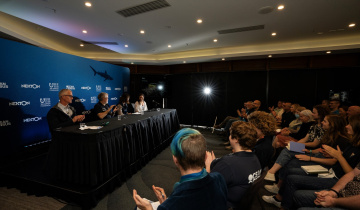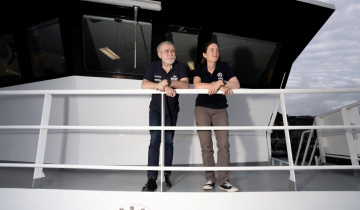How green's the bay?
How green's the bay?
NIWA is applying a cutting-edge method of estimating surface chlorophyll concentrations around the coast to help Environment Bay of Plenty with work on aquaculture management areas.
Chlorophyll is produced by microscopic plants (phytoplankton), and its concentration is related to the amount of phytoplankton in the water. These organisms are at the base of the marine food chain, so it is important to estimate how much phytoplankton there is. Away from the coast, phytoplankton are the main determinants of water colour – the greener the ocean, the more chlorophyll – so we can use data from the NASA SeaWiFS ocean colour satellite to estimate chlorophyll concentrations.
But close to the coast, other factors come into play: sediment in the water scatters visible light; dissolved organic material absorbs it. ‘This can make quite a difference in the coastal ocean,’ says NIWA scientist Ken Richardson. ‘We’ve extended an algorithm developed by the Plymouth Marine Laboratory (UK), and can now distinguish and separately estimate the water constituents affecting coastal ocean colour.’ Since optical properties vary around the country, another NIWA scientist, Matt Pinkerton, took bio-optical measurements in the Bay of Plenty to calibrate NIWA’s colour processing algorithm. The results should give Environment Bay of Plenty a better understanding of primary production processes in coastal areas.








